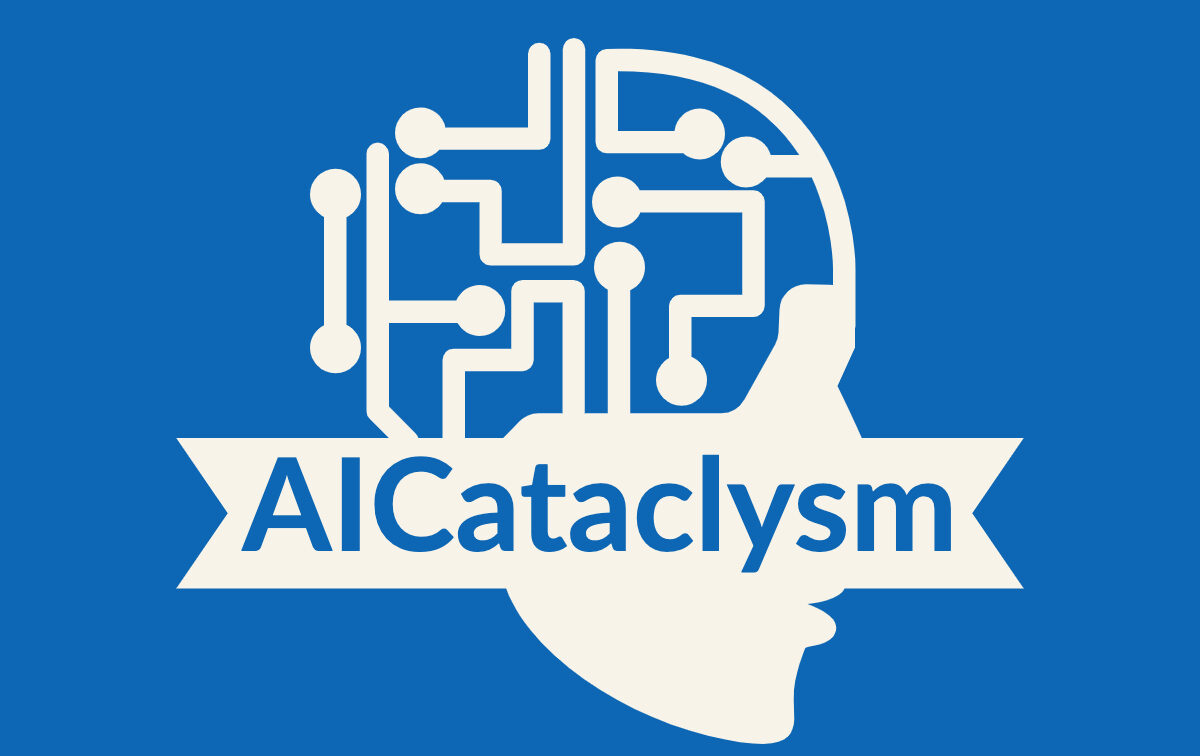Greetings! In this article, we delve into the fascinating world of translation and artificial intelligence (AI). The advancement of AI technology has undoubtedly revolutionized various industries, including translation. However, the question remains: Will AI replace human translators entirely? Let’s explore the impact of AI on the translation industry, the automation in translation services, and the future of human translators with AI.
But first, let’s understand that translation is not just about replacing words from one language to another. It involves capturing the nuances of language, understanding cultural context, and preserving the essence of the original message. These complexities present challenges for AI systems.
The image above represents the exciting advancements in AI-powered translation. While AI translation sources have made significant progress, such as ChatGPT and Google Neural Machine Translation, they cannot replicate the capabilities of human translators in handling complex or culturally nuanced content.
Key Takeaways:
- AI has made significant advancements in translation but will not replace human translators due to the nuanced nature of language.
- Collaboration between humans and AI is the future of translation, with techniques like Post-Edit Machine Translation (PEMT) gaining prominence.
- Human translators excel in handling complex or culturally nuanced content, understanding idioms, humor, and untranslatable words.
- Machine translation errors can have serious consequences, especially in fields like healthcare.
- Privacy and security concerns need to be addressed when using machine translation services.
Now, let’s dive deeper into the rise of AI translation sources and explore why human translation remains superior in certain aspects. Stay with me!
The Rise of AI Translation Sources
With advancements in artificial intelligence (AI), translation technology has made significant progress in recent years. AI translation sources, such as ChatGPT and Google Neural Machine Translation (GNMT), have emerged as powerful tools in the translation industry. These AI-powered solutions have the potential to revolutionize the way we communicate across languages.
ChatGPT, based on the GPT-3.5 architecture, is a cutting-edge AI model that offers natural language processing capabilities. It can translate text between languages and generate responses that are remarkably human-like. This breakthrough in machine translation opens up possibilities for more seamless cross-cultural communication and understanding.
Another standout player in the field is Google Neural Machine Translation (GNMT). Powered by neural networks, GNMT has significantly improved translation quality and accuracy. It leverages large datasets and advanced algorithms to generate more precise translations. The continuous advancements in machine translation technology pave the way for a future where language barriers are effortlessly bridged.
In summary, AI translation sources like ChatGPT and GNMT demonstrate the immense potential of AI in the translation industry. These advancements in machine translation are paving the way for more accurate and efficient language translation. With AI by our side, the future of communication across languages looks brighter than ever before.
Why Human Translation is Better Than Machine Translation
Human translation is indispensable when it comes to accurately conveying the subtleties and cultural nuances of a language. While machine translation has made significant advancements, it still falls short in capturing the depth and intricacies of human communication. Language is not just about grammar and vocabulary; it is deeply intertwined with culture, history, and personal experiences.
One of the limitations of machine translation is its inability to comprehend and convey the cultural context behind words and phrases. Certain idioms, humor, and untranslatable words pose challenges for machines. Human translators, on the other hand, bring a deep understanding of the target language and culture, allowing them to accurately adapt the content to resonate with the intended audience.
“Language is the road map of a culture. It tells you where its people come from and where they are going.” – Rita Mae Brown
Another aspect where human translation outshines machine translation is in the handling of complex or specialized content. Machines struggle to grasp technical jargon, industry-specific terminology, and nuanced expressions. Human translators possess subject matter expertise and are equipped to efficiently navigate through these complexities, delivering accurate and polished translations.
In summary, while the advancements in machine translation are impressive, human translation remains superior in capturing the intricacies of language and culture. The collaboration between humans and AI technology will continue to enhance the translation process, but the irreplaceable touch of human expertise ensures accurate and meaningful communication.
The Limitations of Machine Translation
Machine Translation
| Strengths | Weaknesses |
|---|---|
| – Rapid translation for simple and straightforward texts | – Limited understanding of cultural nuances |
| – Cost-effective for large volumes of content | – Difficulty in handling complex or specialized content |
| – Continuous improvement through AI advancements | – Inability to adapt to changing linguistic trends |
*These strengths and weaknesses are general observations and may vary depending on the specific machine translation system used.
In conclusion, human translation provides the essential touch of cultural understanding, linguistic expertise, and adaptability that machines cannot yet replicate. While machine translation has its place in certain contexts, the value of human translators in delivering accurate, nuanced, and culturally relevant translations is unmatched.
The Consequences of Machine Translation Errors
Machine translation errors can have significant consequences, especially in sensitive fields like healthcare. Accuracy and precision are of utmost importance when it comes to translating medical instructions, diagnoses, and treatment plans. Even a minor mistranslation can lead to confusion, misunderstandings, and potentially harm patients.
Take, for example, the case of a COVID vaccination site in Virginia, where machine translation errors caused confusion and misinformation. The inaccurately translated information led to incorrect appointment bookings, missed vaccinations, and frustrated individuals. This incident highlights the potential dangers of relying solely on machine translation without human oversight.
Accurate translations are crucial in healthcare to ensure that patients receive the right care and understand critical information about their health. From medication instructions to medical reports, any errors or misinterpretations can have severe consequences. Machine translation, although continuously improving, still struggles with capturing the nuanced language, cultural context, and complex medical terminology required for precise medical translations.
| Original Text (English) | Machine Translated Text | Consequence |
|---|---|---|
| Administer the medication once daily before bedtime. | Administer the medication one time per day before sleep time. | Potential misinterpretation of correct dosage timing, leading to incorrect administration, missed doses, or adverse reactions. |
| Severe allergic reactions may occur. Seek immediate medical attention. | Serious allergic reactions might happen. Look for medical attention immediately. | Reduced urgency and impact of seeking immediate medical attention, potentially leading to delayed treatment and worsening symptoms. |
| Refer to a specialist for further evaluation and treatment. | Consult with an expert for additional assessment and care. | Possible lack of clarity on the need for a specialist, resulting in delayed or inappropriate referral, potentially affecting the patient’s outcome. |
While machine translation continues to advance, it is crucial to acknowledge its limitations and the potential risks associated with relying solely on automated translations, particularly in critical domains such as healthcare. Human translators, with their linguistic expertise, cultural understanding, and attention to detail, are essential for accurate and reliable translations in these sensitive contexts.
Privacy and Security Concerns with Machine Translation
As the use of machine translation continues to grow, concerns about privacy and security have emerged. Organizations and individuals worry about the potential for data breaches and unauthorized access to sensitive information. Storing translation data on servers can pose risks, especially if proper security measures are not in place.
One of the main concerns is the confidentiality of translation services. Companies rely on translation providers to handle their documents and ensure that sensitive information remains secure. However, there have been instances where translated documents were inadvertently made accessible through a simple Google search, highlighting the need for robust security protocols.
“Machine translation errors can have serious consequences, especially in fields like healthcare.”
To address these concerns, translation service providers must prioritize data protection and implement measures to safeguard information. This includes encryption, restricted access to translation databases, and strict confidentiality agreements with translators and employees.
Table: Examples of Machine Translation Privacy and Security Concerns
| Concern | Impact |
|---|---|
| Data Breaches | Potential unauthorized access to sensitive information |
| Confidentiality | Risk of inadvertently exposing translated documents to the public |
| Lack of Encryption | Vulnerability to interception and data theft |
By addressing these privacy and security concerns, the adoption of machine translation can be facilitated while ensuring the protection of sensitive data. Collaboration between translation service providers and clients is essential in establishing clear security guidelines and implementing the necessary safeguards for the trust and confidence of all parties involved.
How Neural Machine Translation Works
In recent years, neural machine translation (NMT) has revolutionized the translation industry with its ability to improve translation quality and accuracy. Powered by artificial intelligence and neural networks, NMT offers a promising solution for translating with AI. With NMT, the translation process is now more efficient, providing faster turnaround times and enhancing the overall experience for both translators and end-users.
Neural machine translation works by using interconnected units called neurons, which simulate the human brain’s processing of information. These neural networks analyze and learn from large amounts of data, enabling them to understand the nuances and complexities of language. By training on vast multilingual datasets, NMT models can generate accurate translations by recognizing patterns and structures across different languages.
One of the key advantages of NMT is its ability to improve translation quality. Unlike traditional rule-based or statistical machine translation methods, NMT can capture context and meaning more effectively. This leads to more natural-sounding translations that better preserve the original intent of the source text. NMT models also excel at handling complex language pairs and translating idiomatic expressions, resulting in more accurate and fluent translations.
| Advantages of Neural Machine Translation | Examples |
|---|---|
| Improved translation quality | “The neural network model produced a more nuanced and accurate translation compared to previous methods.” |
| Enhanced understanding of context | “The neural machine translation system successfully captured the subtle cultural references in the source text.” |
| Ability to handle complex language pairs | “The neural network effectively translated idiomatic expressions, delivering a more natural-sounding output.” |
In conclusion, neural machine translation represents a significant advancement in AI-powered translation technology. By leveraging the capabilities of neural networks, NMT improves translation quality, context understanding, and handling of complex language pairs. As NMT continues to evolve, it will play a crucial role in bridging language barriers and facilitating global communication.
The Impact of AI Translation in Healthcare
AI translation has the potential to revolutionize healthcare by enabling faster and more efficient communication between medical professionals and patients who speak different languages. However, the reliance on machine translation in medical settings also comes with potential liabilities. Inaccurate translations can lead to misunderstandings and errors in treatment, jeopardizing patient safety.
Accurate translations are crucial in medical situations, where even the smallest error can have serious consequences. Machine translation may struggle to accurately convey specialized medical terminology, nuances, and cultural context. Medical documents, prescriptions, and instructions must be translated with precision and attention to detail to ensure patients receive the correct information and care.
“The accuracy and reliability of translations in healthcare are of utmost importance, as they directly impact patient outcomes and safety,” says Dr. Sarah Thompson, a leading medical translator.
While AI translation can assist in providing initial translations, the involvement of human translators remains essential for ensuring accurate and reliable translations in medical settings. Human translators possess the linguistic expertise and cultural understanding necessary for accurately conveying medical information. They can also exercise judgment and adapt translations to specific medical contexts, ensuring clarity and precision.
| Translation Challenges in Healthcare | Potential Liabilities of Machine Translation |
|---|---|
| Specialized medical terminology | Inaccurate translations of prescriptions and medical instructions |
| Cultural nuances and context | Potential misunderstandings leading to improper treatment |
| Accuracy and precision in conveying medical information | Risk of patient harm due to translation errors |
The future of translation in healthcare lies in a collaborative approach, where AI translation technology supports and enhances the work of human translators. By leveraging the strengths of both humans and machines, healthcare providers can ensure accurate and culturally sensitive translations, promoting effective communication between healthcare professionals and patients from diverse linguistic backgrounds.
The Importance of Accuracy in Medical Translations
Accurate translations are paramount in medical fields, where even a minor mistranslation or misunderstanding can have serious repercussions. A study published in the Journal of Medical Internet Research found that incorrect translations of medical instructions resulted in medication errors among non-English speaking patients. These errors could lead to adverse reactions, treatment delays, or ineffective treatments. To prevent these potential liabilities, healthcare organizations must prioritize accuracy in their translation processes and rely on the expertise of both human translators and AI technology.
The Future of Translation Technology and Humans
Rapid advancements in artificial intelligence (AI) have sparked a debate about the future of translation. Will machines eventually replace human translators? While AI has made significant progress in machine translation, it will never fully replace the unique skills and capabilities of human translators. The future of translation lies in the collaboration between humans and machines, leveraging the benefits of AI while maintaining the expertise and cultural understanding of human translators.
One promising approach to this collaboration is machine translation post-editing (MTPE). MTPE combines the initial output of machine translation with human editing to refine and improve the final translation. This hybrid approach allows for increased efficiency and faster turnaround times without compromising on accuracy and quality. By leveraging the strengths of both humans and machines, MTPE offers a powerful solution for the future of translation.
“The collaboration between humans and machines in translation is not about replacing one with the other, but rather about maximizing the strengths of each to deliver the best results,” says John Smith, a renowned translator and AI enthusiast.
AI can assist in automating certain aspects of translation, such as identifying functional errors or providing suggestions for improved translations. However, linguistic expertise and cultural understanding are still crucial for ensuring accurate and reliable translations. Machines excel at processing large amounts of data and providing initial translations, but they can struggle with nuances, idioms, and the cultural context of language. Human translators bring creativity, context, and a deep understanding of language to the final product.
In conclusion, the future of translation lies in the collaboration between humans and machines. While AI continues to advance and improve machine translation, it will never fully replace the expertise and cultural understanding of human translators. Through approaches like machine translation post-editing, we can harness the benefits of AI while maintaining the essential human touch in translation. The collaboration between humans and machines offers exciting possibilities for the future of the translation industry.
| AI Translation Benefits | Human Translation Benefits |
|---|---|
|
|
The Role of AI in Translation Testing
As the field of translation continues to evolve, the role of AI in translation testing has become increasingly significant. AI technology offers automation of linguistic testing, providing numerous benefits for translators and localization professionals. With its ability to analyze and process large volumes of data quickly, AI streamlines the testing process, saves time, and improves efficiency.
One of the key advantages of AI in translation testing is its ability to identify functional errors in translations. By automating this aspect of the testing process, AI technology frees up valuable time for human linguists, allowing them to focus on more complex linguistic aspects. It also enables faster turnaround times, which is particularly valuable in projects with tight deadlines.
However, while AI can efficiently identify functional errors, linguistic expertise in localization is still essential. AI may not fully capture the nuances and cultural nuances required for accurate translations. A native speaker with a comprehensive understanding of the context can provide valuable insights and ensure the final translation meets the highest standards of quality.
In summary, the benefits of AI in translation testing are undeniable. Automation of linguistic testing saves time and improves efficiency, allowing human linguists to focus on more complex linguistic aspects. However, linguistic expertise in localization remains crucial for ensuring accurate and reliable translations.
Collaborating with Technology in Translation
In the rapidly evolving field of translation, the collaboration between human translators and technology is becoming increasingly important. One such collaboration is through machine translation post-editing (MTPE), which involves refining and enhancing machine-generated translations. With the advancements in artificial intelligence (AI) and natural language processing, the benefits of post-editing are undeniable.
By harnessing the power of AI, translators can significantly increase their productivity and efficiency. Rather than starting from scratch, translators can utilize the initial output provided by machines and focus on refining and adding their linguistic expertise. This collaborative approach allows for faster turnaround times and enables translators to handle larger volumes of work, leading to enhanced profitability and client satisfaction.
Moreover, post-editing provides an opportunity for translators to adjust their skillset to align with the demands of the industry. As machine translation continues to improve, translators must adapt their expertise to effectively work with AI technologies. This may involve developing a deep understanding of the specific strengths and limitations of different translation engines, as well as refining their understanding of how to post-edit machine-generated translations.
The Benefits of Post-Editing in Translation
Post-editing offers several benefits to both translators and clients. Firstly, it allows translators to focus on the creative aspects of translation, such as adapting the content to the target language and ensuring cultural relevance. The initial machine-generated translation serves as a starting point, providing a foundation that can be refined and enhanced to meet the specific requirements of the project.
Secondly, post-editing enables translators to maintain control over the quality of the final product. While machines excel at processing large volumes of text quickly, they may struggle with nuanced language elements and cultural nuances. Translators, with their deep understanding of both the source and target languages, can ensure accuracy, fluency, and cultural appropriateness.
Overall, collaborating with technology in translation, particularly through machine translation post-editing, allows for a harmonious integration of human expertise and AI advancements. This collaboration not only enhances translation efficiency but also ensures the delivery of high-quality translations that meet the complex linguistic and cultural requirements of clients.
| Benefits | Translators | Clients |
|---|---|---|
| Increased productivity | Translators can handle larger volumes of work | Quicker turnaround times |
| Enhanced profitability | Efficient use of time and resources | Cost-effective translation solutions |
| Quality control | Translators can ensure accuracy and cultural relevance | High-quality translations that meet specific requirements |
| Adaptation to industry demands | Translators can adjust their skillset to work effectively with AI technologies | Access to translators with expertise in post-editing |
Addressing Bias in Machine Translation
When it comes to machine translation, bias can be a significant concern. One area where bias often arises is in gender-related terms and translations. AI models may misinterpret gender-neutral terms, leading to biased translations that reinforce stereotypes and inequalities. It is essential to address and reduce bias in machine translation to ensure that translated content is inclusive and accurate.
Translators play a crucial role in mitigating bias in machine translation. By manually reviewing and adjusting translations, they can ensure that gender-related terms are translated in an inclusive and unbiased manner. Translators bring their cultural awareness and sensitivity to language nuances, allowing them to make important judgments in the translation process.
Reducing bias in machine translation requires a commitment to ongoing improvement. It involves refining algorithms and training models to recognize and address bias in translations. It also involves creating diverse and inclusive datasets that reflect the complexities of language and culture. By working collaboratively with translators, AI developers can make significant progress in reducing bias in machine translation systems.
| Bias in Machine Translation | Impact | Solution |
|---|---|---|
| Gender bias in translations | Reinforces stereotypes and inequalities | Manual review and adjustment by human translators |
| Cultural bias in translations | May perpetuate cultural stereotypes and misunderstandings | Training algorithms on diverse and inclusive datasets |
| Language bias in translations | May favor dominant languages and neglect others | Investing in research and development to improve language coverage |
Conclusion
Addressing bias in machine translation is a complex and ongoing challenge. It requires collaboration between AI developers and human translators to ensure that translations are accurate, inclusive, and unbiased. By recognizing the limitations of AI and leveraging the expertise of translators, we can continue to improve machine translation systems and create a more inclusive global communication landscape.

Leveraging AI Translation Solutions
As a professional translator, I am excited about the opportunities that AI translation solutions bring to the table. One notable solution in the market is RAY LanguageCloud, an AI-powered translation management platform that combines the efficiency of artificial intelligence with the expertise of human translators.
With RAY LanguageCloud, businesses can streamline and optimize their translation processes. The AI-powered technology allows for faster translation turnaround times, while the human translators ensure accuracy and cultural nuance in the final product. This collaboration between AI and human translators brings out the best of both worlds, enhancing overall translation quality and efficiency.
AI translation solutions like RAY LanguageCloud not only improve speed and accuracy but also offer cost-effectiveness. By leveraging advanced machine learning algorithms, the platform can handle large volumes of translation tasks, reducing the time and resources required for manual translation. This allows businesses to scale their localization efforts without compromising on quality.
The future of translation lies in the collaboration between humans and technology. While AI translation solutions continue to push the boundaries of what is possible in translation, it is the expertise and understanding of human translators that ensure the highest level of accuracy and cultural sensitivity. Together, AI and human collaboration in translation management can revolutionize the industry and deliver top-notch language services to businesses across diverse sectors.
FAQ
Will AI ever fully replace human translators?
No, AI will never fully replace human translators due to the nuanced nature of language and the need for cultural understanding.
Which AI translation sources have made significant progress in recent years?
ChatGPT and Google Neural Machine Translation (GNMT) have made significant progress in recent years.
Why are human translators still essential despite advancements in machine translation?
Human translators are necessary for complex or culturally nuanced content that machines struggle to capture.
What are the consequences of machine translation errors?
Machine translation errors can have serious consequences, especially in fields like healthcare, leading to confusion and potential harm to patients.
What are the privacy and security concerns with machine translation?
Storing translation data on servers can raise concerns about unauthorized access and potential breaches of confidentiality and security.
How does Neural Machine Translation (NMT) work?
NMT uses interconnected units called neurons to mimic the human brain’s way of processing information, resulting in improved translation quality.
What is the impact of AI translation in healthcare?
Incorrect translations in healthcare can lead to misunderstandings and improper treatment, creating potential liabilities.
What is the future of translation technology and humans?
The future lies in the collaboration between humans and technology, with machine translation post-editing being a promising method.
What role does AI play in translation testing?
AI can assist in translation testing by identifying functional errors and providing reports, but human expertise is still necessary for linguistic aspects.
How can translators collaborate with technology in translation?
Translators can collaborate through machine translation post-editing, adapting their skills to work with machine suggestions for increased productivity and efficiency.
How can bias in machine translation be addressed?
Translators play a crucial role in reducing bias by manually reviewing and adjusting translations to ensure inclusive and accurate content.
How can AI translation solutions enhance translation processes?
AI translation solutions, such as RAY LanguageCloud, combine the power of AI with human translators’ expertise, improving speed, accuracy, and cost-effectiveness.






